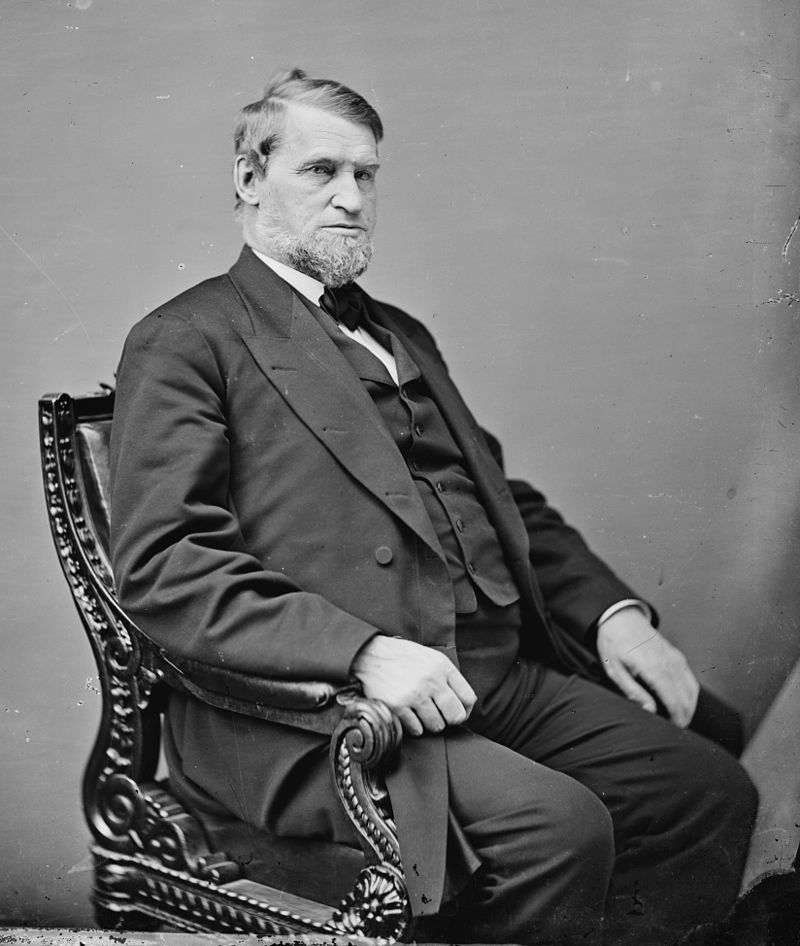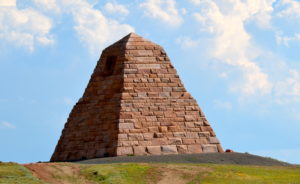
Dedicated on November 17. 1881, Oakes Ames Memorial Hall has stood magnificently near the center of North Easton Village (a neighborhood within the incorporated town of Easton, MA) for more than 135 years.
Two of the most gifted and renowned designers and architects in American history teamed to create the plans for the property — with Henry Hobson Richardson designing the building and Frederick Law Olmsted designing the landscape and terraced front steps.
Oakes Ames Memorial Hall was commissioned by the children of Congressman Oakes Ames (1804-1873) to honor their father, a powerful industrialist, political leader, philanthropist, and the single most influential and significant person in the building of the Union Pacific Railroad segment of the Transcontinental Railroad.
Oakes Ames Memorial Hall (OAMH) is a National Historic Landmark, and is contained within two districts listed on the National Register of Historic Places: the North Easton Historic District and H.H. Richardson Historic District.
Oakes Ames Memorial Hall is among the most preferred special events and meeting spaces in Metropolitan Boston.

As for Congressman’s Ames’s role in the building of the Transcontinental Railroad, consider in that he was a primary advocate and standard bearer for the project, he played an oversized role in the building of transportation network that was fundamental to the young republic taking a huge step to securing viability, durability, and influence internationally.
Oakes Ames and his brother Oliver Ames, Jr. (1807-1877), were heirs to great wealth through their family’s shovel empire, Ames & Sons — based in North Easton Village — and as managers and executives in the business were skilled and talented in building the enterprise.
In 1862, Oakes Ames loaned $200,000 to help get construction of the Central Pacific component of the Transcontinental Railroad up and running.
In 1863, Oakes Ames was elected to represent the Second District of Massachusetts in the U.S. House of Representatives. He became a member of the House Committee on Railroads, a committee which had as a primary responsibility the writing of laws and legislation governing the building of the Transcontinental Railroad.
In 1864, Congress Ames steered legislation to create and have passed an amended version of the Pacific Railroad Act which had been signed into law two years earlier.
The new act authorized and provided funding for the Pacific — soon to be called Union Pacific — stretch of the Transcontinental Railroad that would run westward from Iowa and meet up with the Central Pacific Railroad being built eastward from San Francisco.
In January of 1865, with the end of the Civil War on the horizon, President Abraham Lincoln called Congressman Ames into his office to request that Mr. Ames become the point person on the completion of the Union Pacific, which was bogged down and behind schedule.
President Lincoln said to the congressman, “Ames, you take hold of this. The road must be built, and you are the man to do it. Take hold of it yourself. By building the Union Pacific, you will be the remembered man of your generation.”
Congressman Ames took up the challenge, and enlisted the help of his brother, Oliver, who in 1866 became the president of the Union Pacific.
Oakes and Oliver Ames led successful fundraising effort to expedite the building of the Union Pacific line — putting the project figuratively and literally back on track. Without the leadership of these men the Union Pacific would have continued to founder.
On May 10, 1869 the Union Pacific and Central Pacific lines were joined at Promontory Point, Utah.
Honors would be bestowed on Oakes and Oliver Ames.
Two communities through which the Union Pacific Railroad would run were named for Congressman Ames: the city of Ames, Iowa, and Ames, Nebraska, an unincorporated census-designated place.
In 1879, the Union Pacific purchased land at the highest elevation through which the Transcontinental Railroad ran for the purpose for erecting on the spot a monument to the Ames brothers.
The land that the UP bought was at an elevation of 8,247 feet and about 20 miles east of Laramie, Wyoming.
Fittingly, commissioned to design the monument was H.H. Richardson, with Augustus Saint-Gaudens (whose work is also found in North Easton) hired to create sculptures that would adorn the edifice.
President Rutherford B. Hayes attended the dedication, in 1882, of the Ames Monument, a four-sided 60-foot high random ashlar pyramid.
On the western side of the pyramid was a bas relief of Oakes Ames, and on the eastern side one of Oliver Ames, both designed by Mr. Saint-Gaudens.
After the dedication of the Ames Monument, the Union Pacific railroad line was moved further from the edifice.
Today the monument occupies a fairly desolate area.
It is though, very much a tourist attraction, and historically important.
In 1972, the Ames Monument joined Oakes Ames Memorial Hall on the National Register of Historic Places — and this July 7th the monument will be officially designated as a National Historic Landmark.